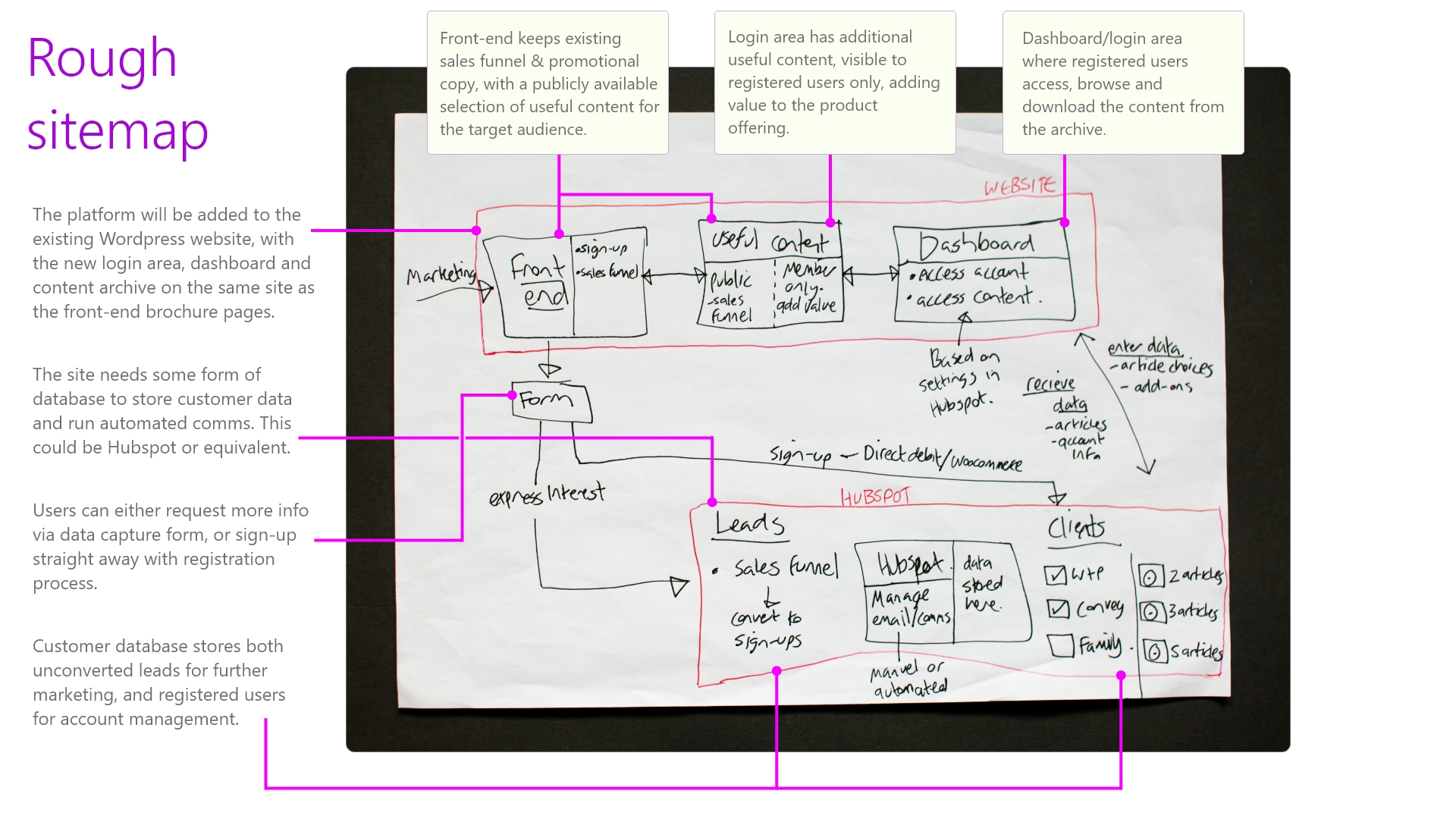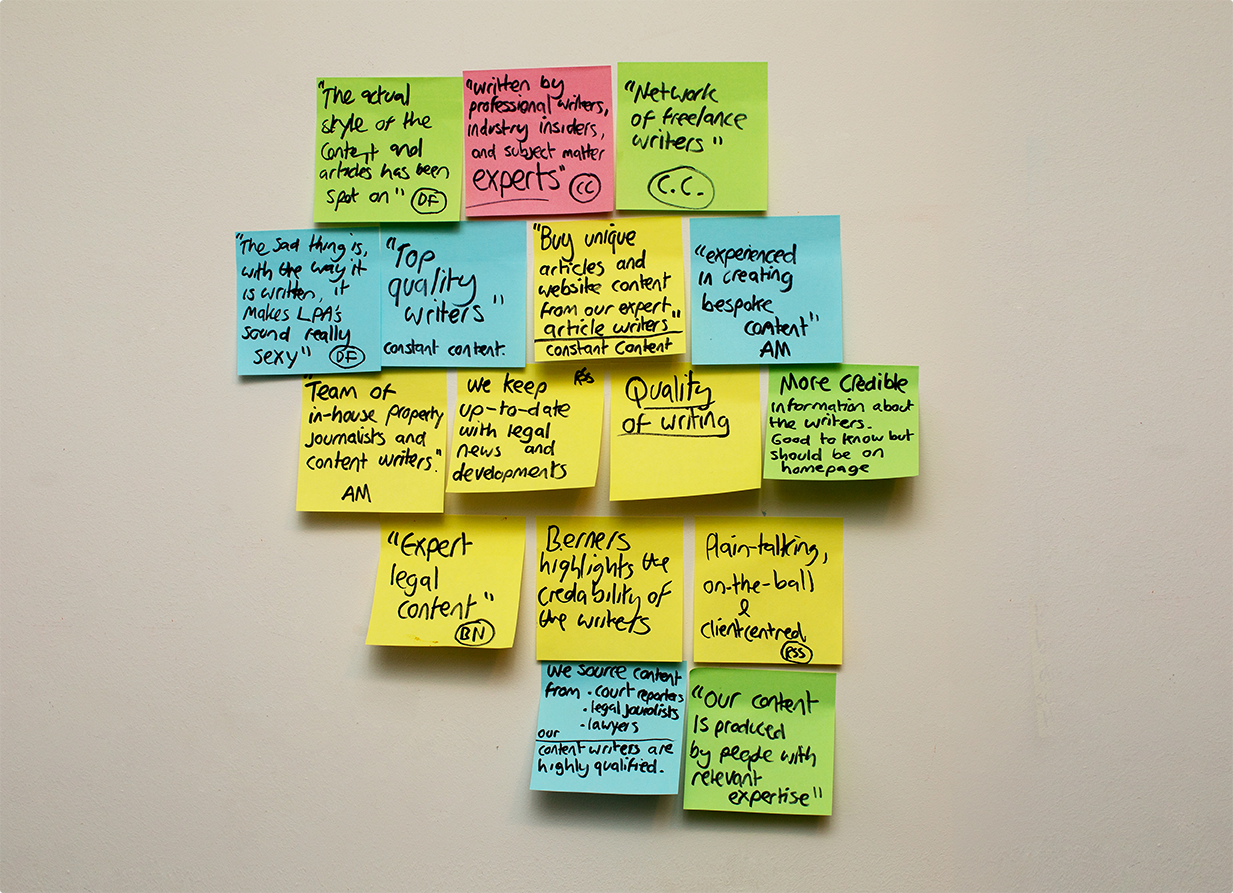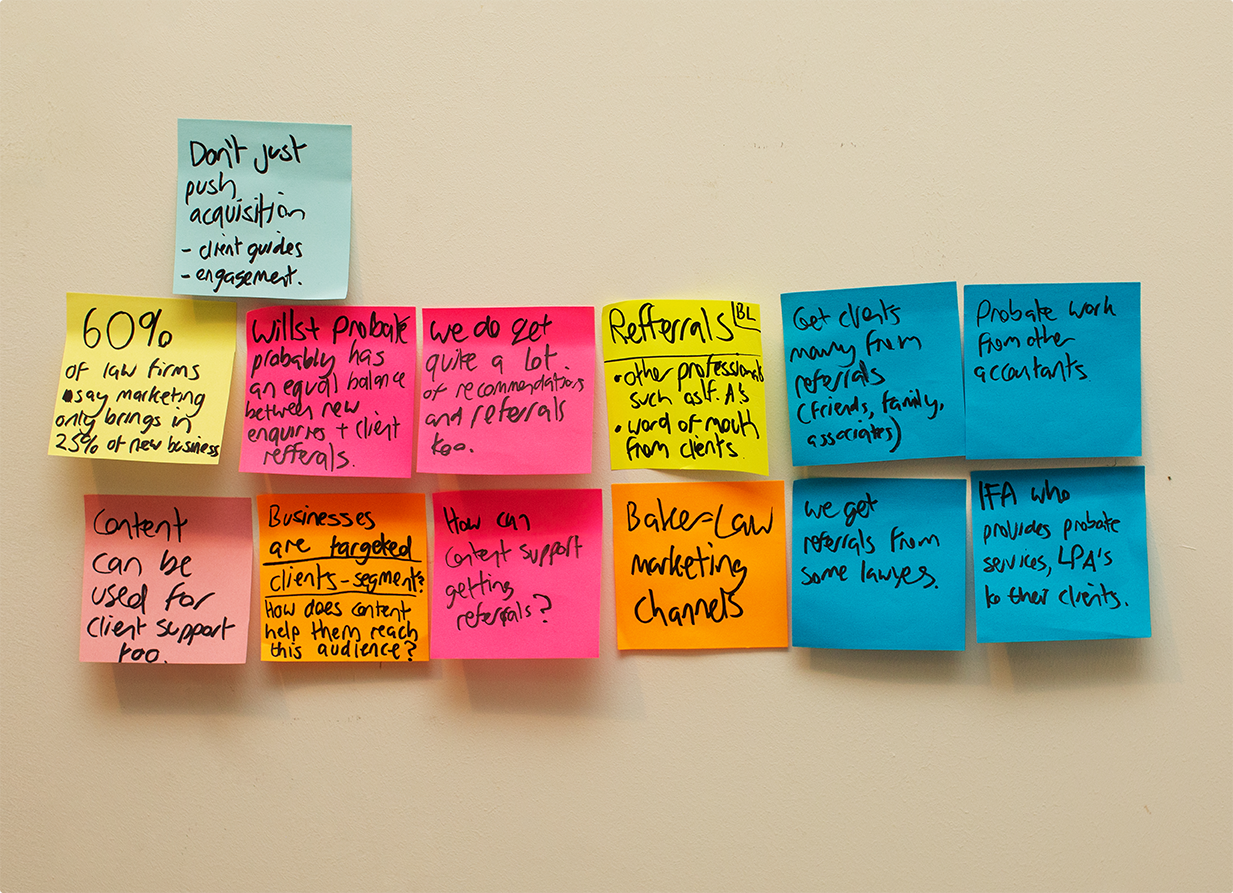Ready-made content archive for the legal sector
Today’s Media is a legal publishing company which provides specialist pre-written and bespoke legal content for legal practitioners, for use in their marketing campaigns.
Up until now the content has been delivered manually to their clients. They liase directly by email to select and deliver a monthly quota of articles.
They were looking to build an online platform where clients can sign-up, browse the archive & download the content directly each month.


What is the product?
Written content plays an important role in the legal sector due to the specialist, technical nature of the subject. Articles need to be factually correct and written by specialist writers with expert legal knowledge. Content marketing techniques are important and effective in the marketing activity of legal firms due to the nature of the content.
Legal content can be used effectively to:
- Provide valuable information. If the average person wants to dispute a will, they need to know exactly what to do. Potential clients may find this information on the website of their local law firm.
- Build credibility. By demonstrating expert legal knowledge, written content builds trust with potential clients, and they become more likely to choose their firm.
- Engage target audience. Written articles also provide news, interest, and topical content for regular engagment and brand awareness on blogs, social channels and newsletters.
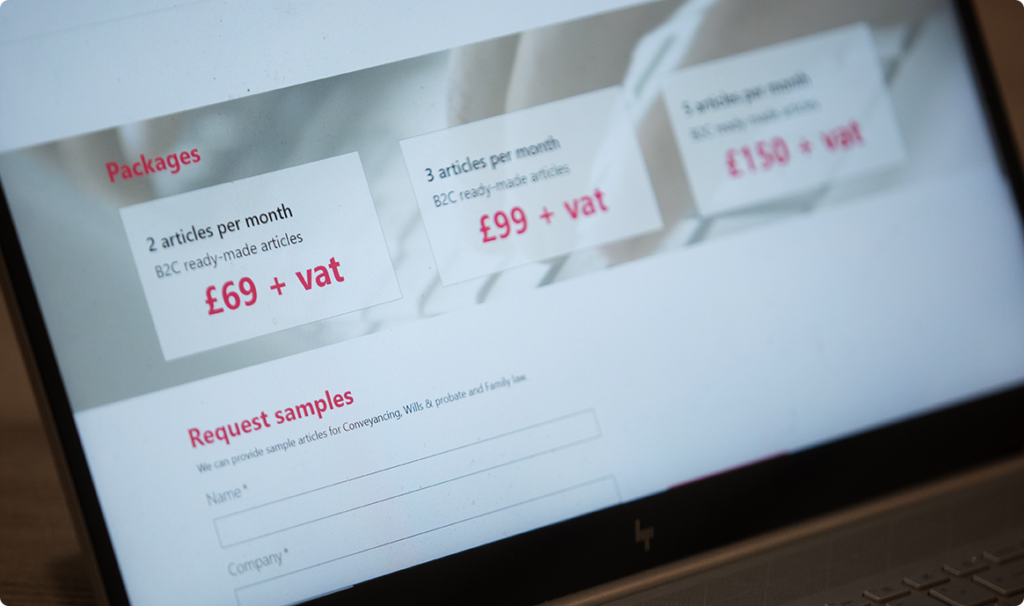

We use it to drive website clicks
Hannah, Baker Law
Writing this content is time-consuming, and takes up the precious fee-earning time of solicitors and legal practitioners. Having a supply of pre-written content for their marketing activity is valuable, and this is the key benefit highlighted by Today’s Media. Amy Nelson is Head of the Private Client department at Baker Law. She described how the content is useful.
We used to do it in house, that’s why we didn’t do a lot. There has been a huge increase in the amount of content we are using
Amy Nelson, Baker Law
Even if you had the title, if you had to write it yourself, its quite time consuming. Whereas if you’ve got half an hour, you read through the articles, make any small tweaks and then theres two or three articles for your department, and that’s really helpful, in that sense.
David Fredrick from Marcus Bishop Associates uses it as filler for his newsletters. But he explains his real goal here, as a financial advisor who is certified to carry out work typically done by Wills & Probate solicitors.
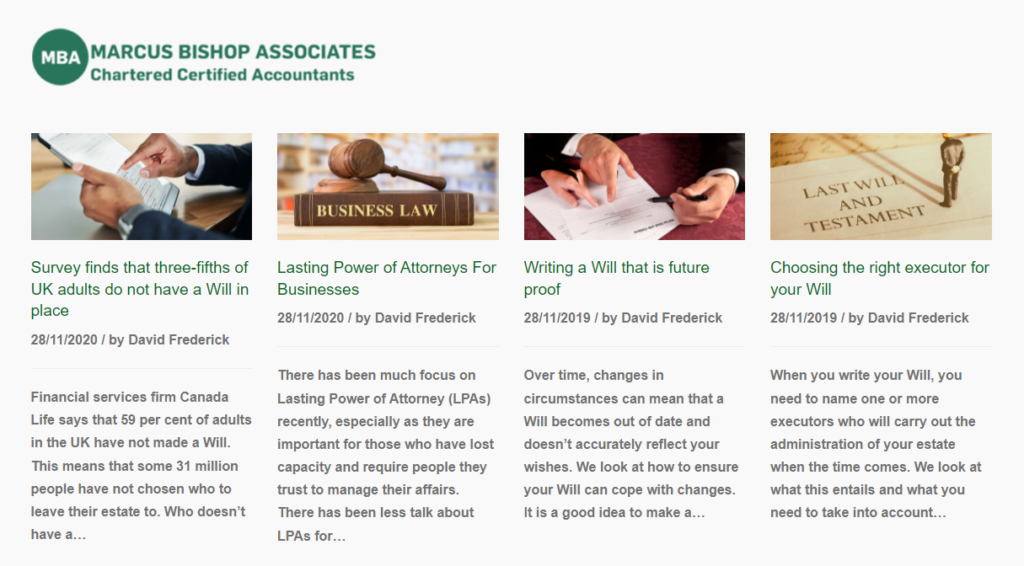
“For me, filling newsletters isnt important. For me, the key benefit is establishing our credibility.
David Fredrick, Marcus Bishop Associates.
Competitors
Berners
This legal marketing agency are probably the closest competitor in terms of product offering. They have valuable resources for law firms offering tips on marketing. The main CTA and data capture incentive on the homepage is offering a ‘DIY marketing audit’.

Legal RSS
This firm offer a large volume of legal news content, with an RSS feed for law firm websites and social media. Copy highlights topical, legal news articles to engage. They lean more towards the topical content than evergreen website content.

Angels Media
Equivalent product in the property industry. Like Today’s Media, Angels have four industry publications, with daily news and features. Their status as publishers of content fits with the ready-made content offering, giving credibility as writers.

Constant Content
Ready-made content for all industries. Larger operation, the big boys. Smooth, slick, and easy to use. Great sign-up. Great search features compared to other competititors. Completely different business model and audience but lots to learn, and borrow. Bespoke – SEO highlighted. Its unique content.

Competitor summary
Overall, the competitior websites do describe the features and benefits of ready-made content. But all the best benefits seem to be buried deep into the site, lost in heavy text and riddles. And requesting samples seems like a significant barrier compared to the simple, easy registration process on Constant Content.
Today’s media
Today’s Media are a legal publishing company with three publications, and they also run a number of industry awards.
Copy on the brochure site highlights their position as legal publishers, giving their articles credibility.
“ready-made and bespoke content to populate your marketing channels, along with tailored social media plans for your business”.

As the publishers of the Today’s publications, Today’s Media are experts within the legal sector and are dedicated to working with conveyancers, solicitors, estate planning professionals, Will writers and law firms of all sizes.
Due to our expertise and dedication to the legal sector, we know how your business works and we understand the challenges you face. Therefore we are well placed to inform for and on behalf of your business through our content marketing offering.

Packages
The monthly articles cover three areas of law:
- Wills & Probate
- Conveyancing
- Family Law
Each month there are five articles written for each area. Clients can pay for two, three or five articles per month, and are invoiced each month depending on their chosen package.
The articles are delivered manually to every client as word documents in a zip file. Simplifiying this lengthy process was a key objective of the project.
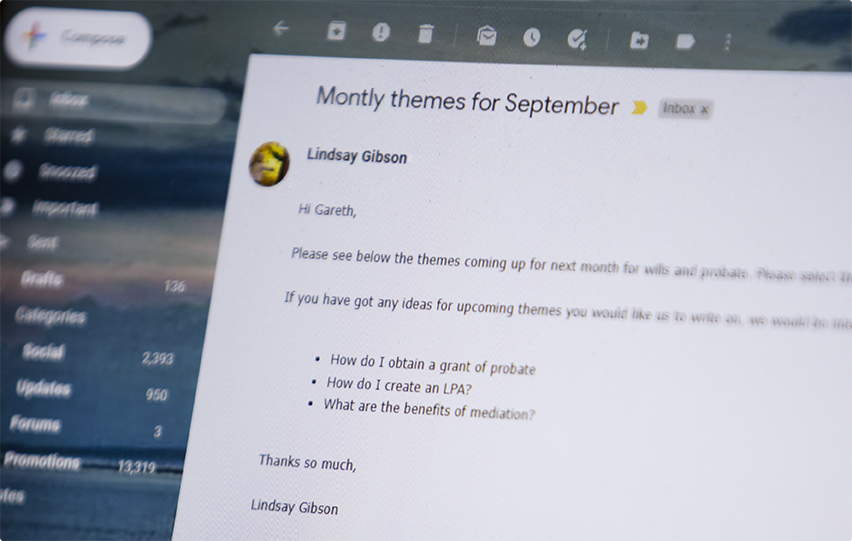
Current delivery process



“Its not just time consuming, mistakes happen so clients end up with the wrong articles, have to get in touch and then end up with more than they ordered”
Lindsay, Today’s Media
Improved delivery process

Stakeholder interviews
Needless to say, an automated process would save a whole lot of valuable time for Today’s Media and their clients alike. It just needed designing to fit in exactly with the working operations of their clients, for a smooth, seamless experience.
Meetings with stakeholders established further objectives for the project, before meeting with the end users.

David Opie – Managing director
David wanted to build the platform to save time each month delivering the articles, so the ready-made content arm of the business pretty much ran itself. They want a searchable achive, but also to maintain the addition of fifteen new articles each month, with a monthly subscription fee depending on the number of articles. Clients should be able to log in, select and download their monthly quota of content.
Content delivery
David had concern about whether clients will forget to log in and download their articles each month. The user interviews focused on understanding exactly how firms choose and download the written content so the delivery could be designed to fit in with their processes as seamlessly as possible, to tackle this concern.
On the same page
Initial ‘blind’ sketches were presented to confirm how the platform might look. This ensured the project was heading in the right direction – it was important to make sure we were on the same page before beginning.
The initial sketch mirrored the existing monthly structure exactly as David wanted to keep the monthly addition of new articles.
David, however, envisaged one complete archive, rather than keeping them in montly sections. The sketches were updated accordingly.
Lindsay Gibson – Content specialist
Lindsay delivered the ready-made content product until 2022, before starting as head of marketing at another law firm. Conversations with Lindsay provided many useful insights, including customer goals and feedback about the product.
Content marketing tips
As part of the marketing activity to promote the content offering, Lindsay ran a popular webinar series all about content marketing for legal businesses. The TM brochure site also included a content marketing resource with useful guides on content marketing to support the webinar series.
Legal practitioners tend to understand the importance of legal content, but may lack knowledge when it comes to the different ways in which content can be used. The useful information from the webinar proved to be in demand with the target audience, with over 70 regular attendees
“Your webinar is really interesting, looking forward to the next”
“Great information, thank-you”
“Thanks a lot, really interesting”

Survey
As part of the research for the initial brochure site, a survey was carried out to learn more about the marketing operations of the target audience. Todays Media have a substantial database and the survey had a good response, with some useful insights about marketing in the law sector.
The survey confirmed that within the law sector, small firms often carry out their own marketing. Content is widely used across website and social channels, but there is still a significant knowledge gap in content marketing techniques.
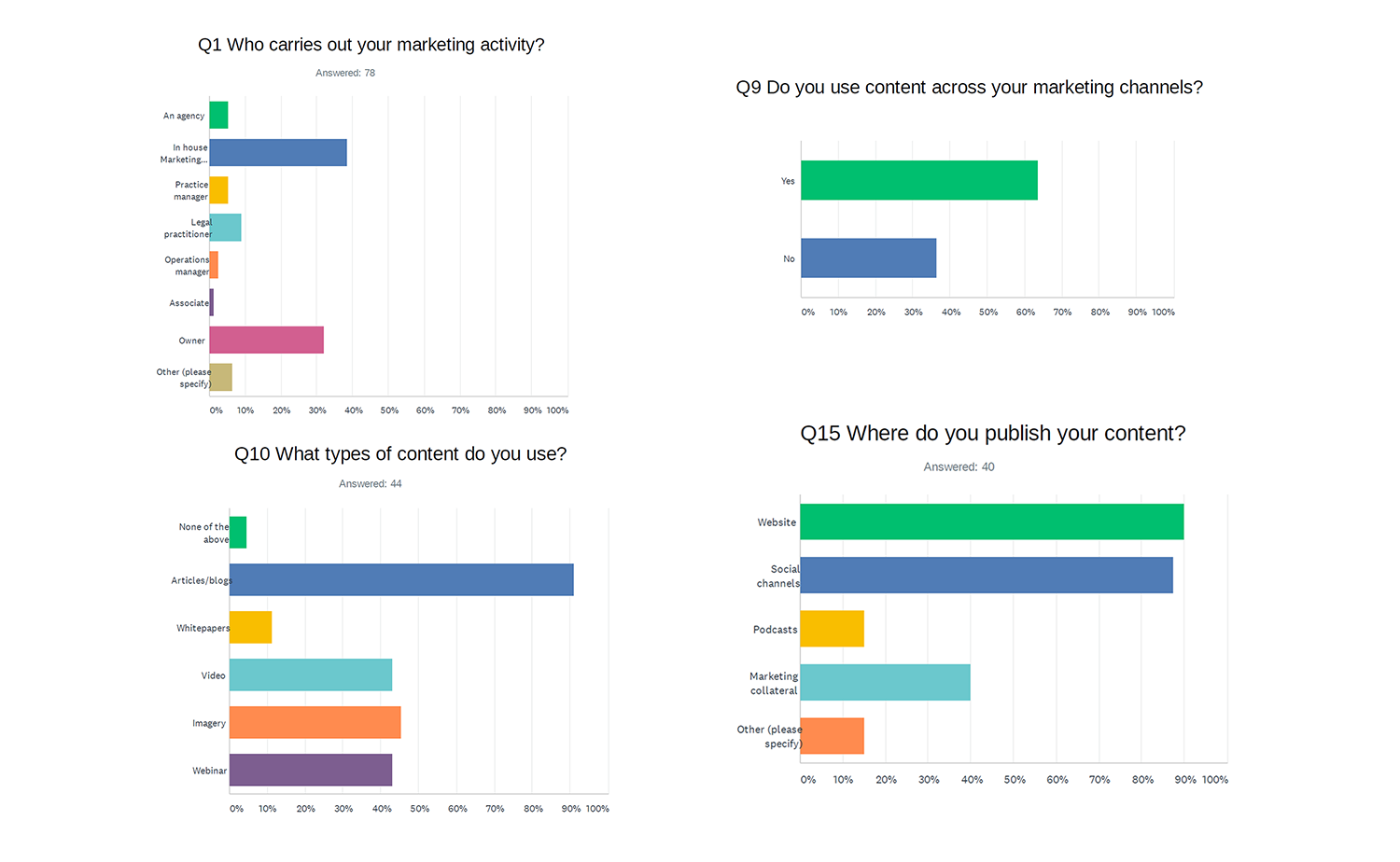
Interviews
Two interviews were carried out with two different types of client. Its great hearing the end users describe the benefits of the product and how they use it, compared to the website copy promoting the content. They describe it in plainer, more understandable terms. No riddles, just their goals, and how they use it. Simple.
Baker Law
Baker Law is a large, full-service law firm with several departments making use of the content. I spoke to paralegal Hannah Tinsley, and Head of Private Client, Amy Nelson.
Interview objectives included exploring how the content would be delivered, and finding out exactly how they currently access, choose, and distribute the content between departments so the new platform could be designed to deliver the articles as seamlessly as possible.

Marcus Bishop Associates
David Frederick is an independant financial advisor (IFA) for Marcus Bishop Associates. It was important to interview different types of client, who may have different goals, objectives, and operations. Great example of a small, independant firm doing DIY marketing, and using the content to do this.
Re-purposing
David notices they re-use topics – ‘Sometimes there is a development on a theme’
Duplicate content
He isn’t keen on competitors using the same content, and he would like bespoke content.

Research insights
There is one survey left to go out, and a few more iterations, but the development is just beginning. Here is an outline of the research insights and the resulting design objectives, with screenshots of the solution so far.

Who
Small firms who often have a DIY approach to marketing.
They understand value of content, particularly because of the industry. Writing is what Lawyers do. They obviously get the concept of providing valuable information and demonstrating expertise. Its what they sell.
They also understand the value of marketing to grow their business, but they may not have knowledge of the different ways in which content can be used. DIY marketing tips are therefore useful, and simple guidance is readily appreciated and in demand.
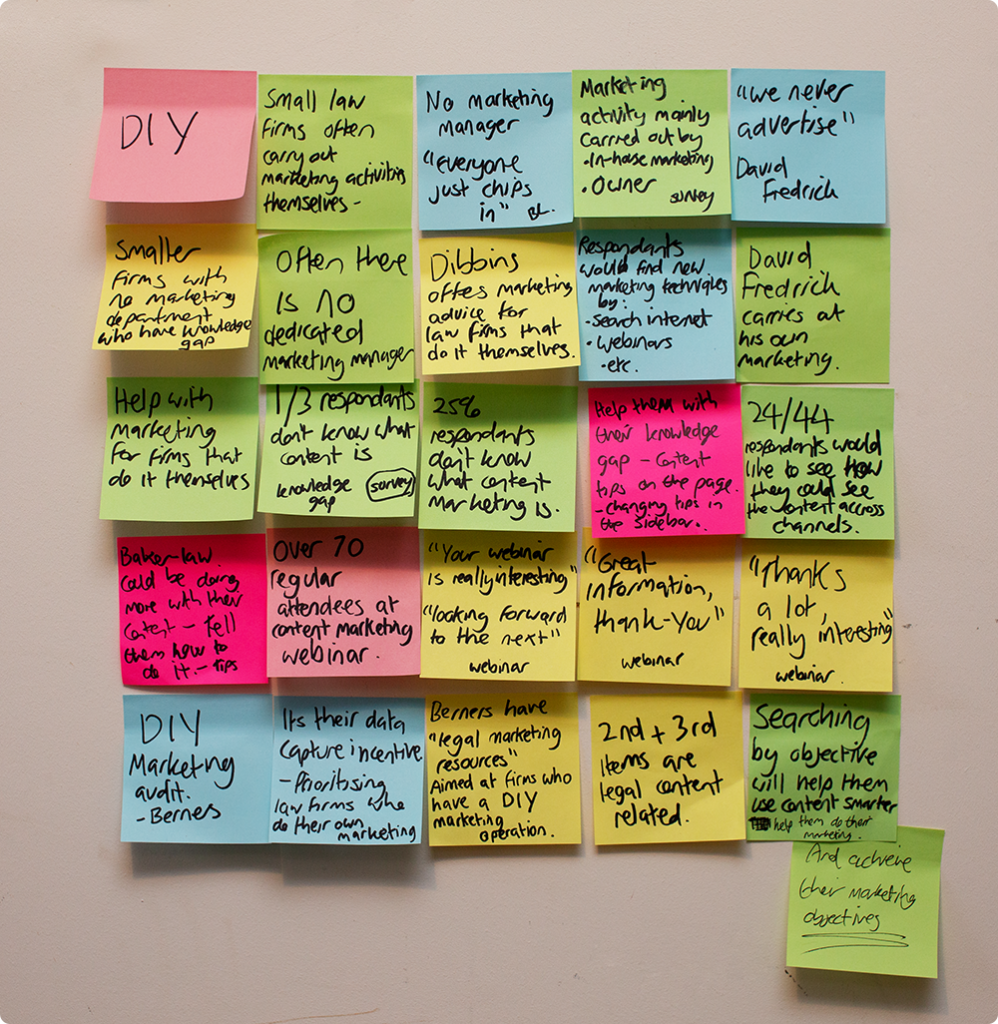
Goals
- Drive clicks
- Get more clients
- Grow business
- Save time
- Save money
How it is used
- Onsite, offsite.
- Website content – service page explainers, valuable content for prospective clients, blogs.
- Social/newsletters – ready supply of content to post on social media and fill newsletters.
- ‘Evergreen’ explainers are used on service pages, and never go out of date.
- Topical and relevant news & interest articles are used for blogs & socials.
Context
- Bigger firms like Baker Law have multiple departments, with busy private client solicitors, and often no designated marketing manager to oversee the website content and social media activity.
- Smaller, independant practitioners are busy with clients and carrying out marketing activites inbetween.

Content goals, objectives and benefits
Via the endless trawling of product descriptions and benefits across several competitor websites, along with in-depth stakeholder and user interviews, the ultimate goal of using ready-made content was established.
Here is the entire field of content marketing summarised in five sentances:
- Valuable content to attract prospects.
- Build credibility to increase conversion.
- Client support to improve service.
- Engage to maintain relationships.
- Brand awareness to get the name out there.
Pretty much every possible strategic objective and goal of content marketing can be categorised into one of these five bullet points.
SEO is not included because it is syndicated content with duplicates on other sites, so search engines do not display the content.
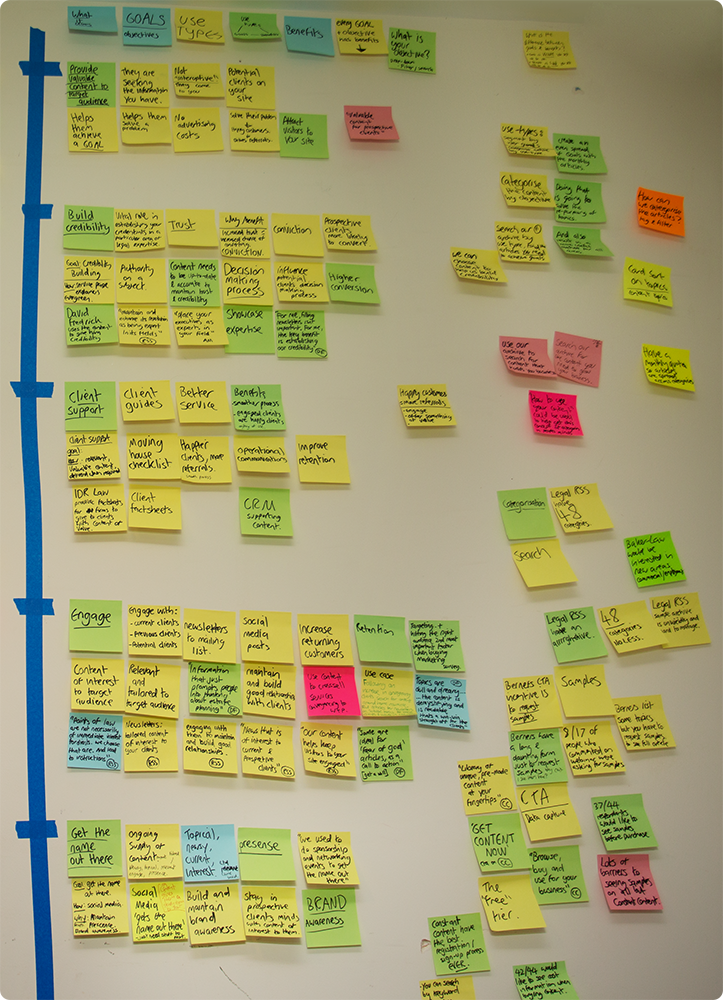
Design objectives
- Devising landing page content which clearly explains the product and benefits for legal firms
- Smooth registration process
- Simple and seamless monthly selection and download process for busy firms
- Dashboard content that educates DIY marketeers and helps them use their content smarter
- Categorisation and search functionality for the archive that supports this educational objective
Solution
There are a few iterations to go to finalise parts of the design, but the main screens and flows are outlined here.
Site map
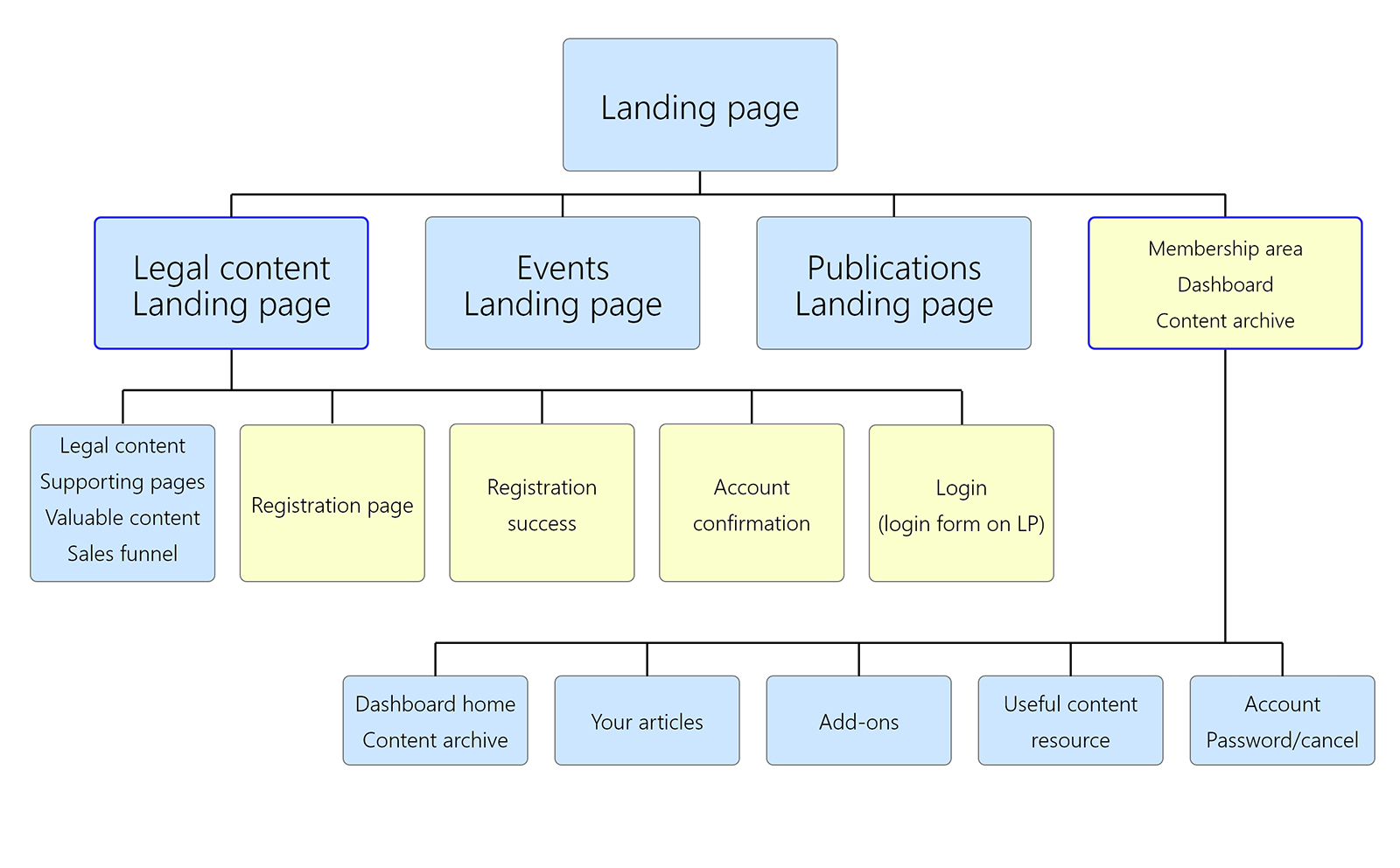
The new login area and dashboard are being added onto the existing WordPress brochure site. The events and publications both have their own websites so the pages are just brief descriptions. Including these established industry events and publications on the site brings credibility to the product offering.
The main purpose of the legal content pages therefore, is to gain new content customers, with a typical registration process. The dashboard area is only visible to subscribers when they log in.
Registration
Berners, Legal RSS and Angels Media all have a contact form as their CTA. Users need to request samples or a call back to find out more about how the service works, and to sign-up.
Alternatively, Constant Content have a slick registration with a very reassuring progress bar.
Although it is a different market with a different model, being able to sign-up this easily and immediately view the articles is simpler and quicker than requesting samples and waiting for a reply.
8/17 comments on the TM webinar were asking for samples – so its important to provide them.
Legal RSS have a page with a large number of sample articles, although there is no obvious menu item on the homepage to find this page.

The free tier
The CTA/registration for the new platform was designed taking these points into consideration. Rather than filling in a contact form to request samples, prospective customers can sign up to a ‘Free tier’ with an easy registration process that looks something like the Constant Content process.
Once signed-up, they can browse the full archive to see all the topics and themes available, with summary/snippets of each article. With the free tier, they can download three sample articles to use. After the three have been downloaded, they can only access more by upgrading to a paid tier.
This means:
- They can easily see the samples and browse the archive.
- There is a structural bond with them so further marketing/sales funnel activity can encourage them upgrade to a paid tier.
Zoom in on the pdf or have a quick scan below
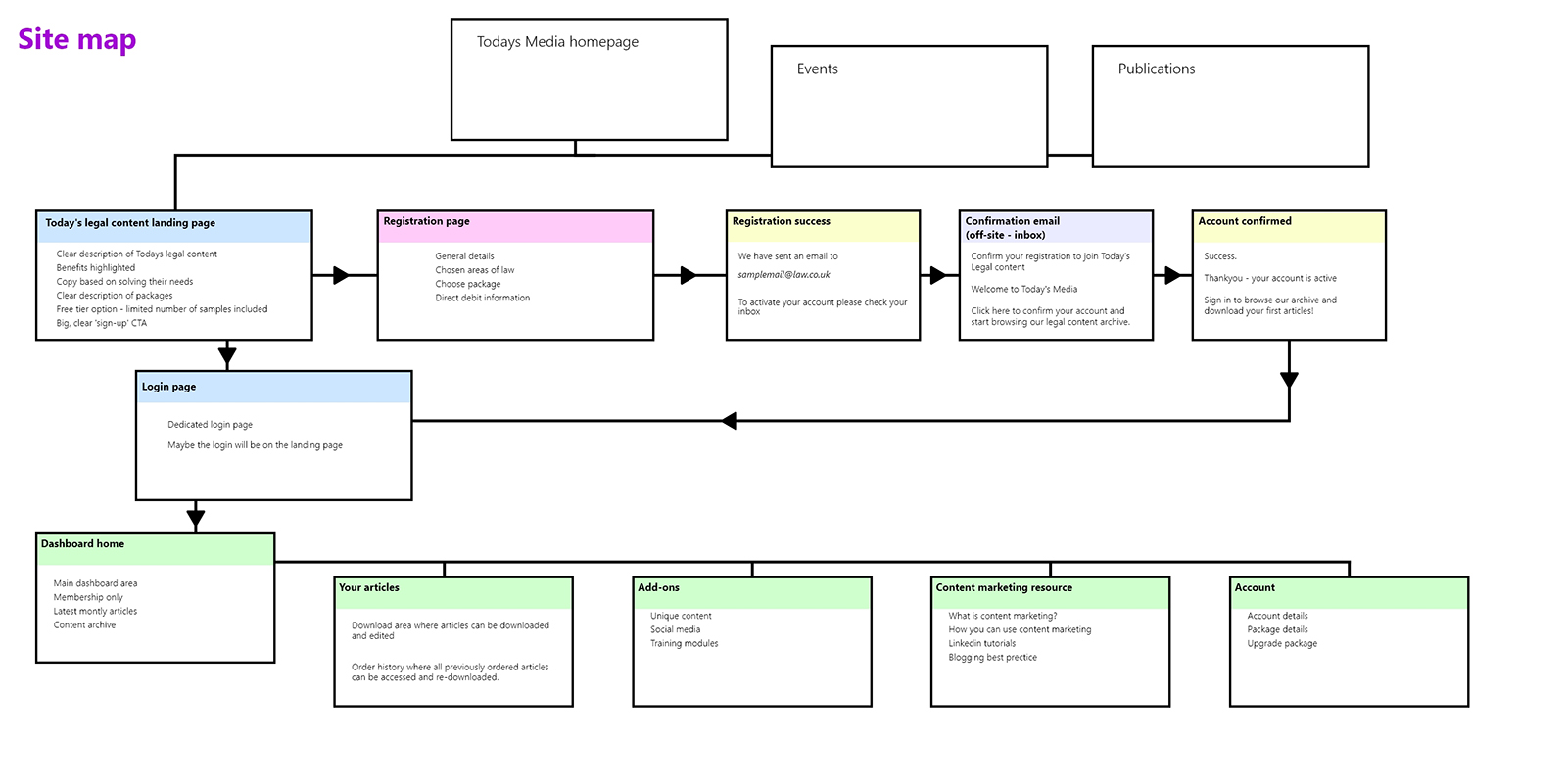

Login area / dashboard
Login, view new monthly articles or browse the full content archive.

Article selection
- Articles are selected and added to the cart area in the right-hand sidebar
- When the full quota for the user is reached, the download button becomes active
Download articles page
After selecting chosen articles and clicking download, user is taken to the ‘Your articles’ page, where their chosen articles are displayed, with a number of different features, explained below.



Searching the archive / categorising the content
Like all archives, searching through lots of items needs some sort of organisation into categories to make finding the right content easier and more managable.
Legal RSS has an extensive list of sample articles, with no less than 48 categories listed down a very long page. Its great to have samples on the site, unlike Berners, but its hard to manage and find what you need.
So how should the articles be categorised? Jesse James Garrett says…
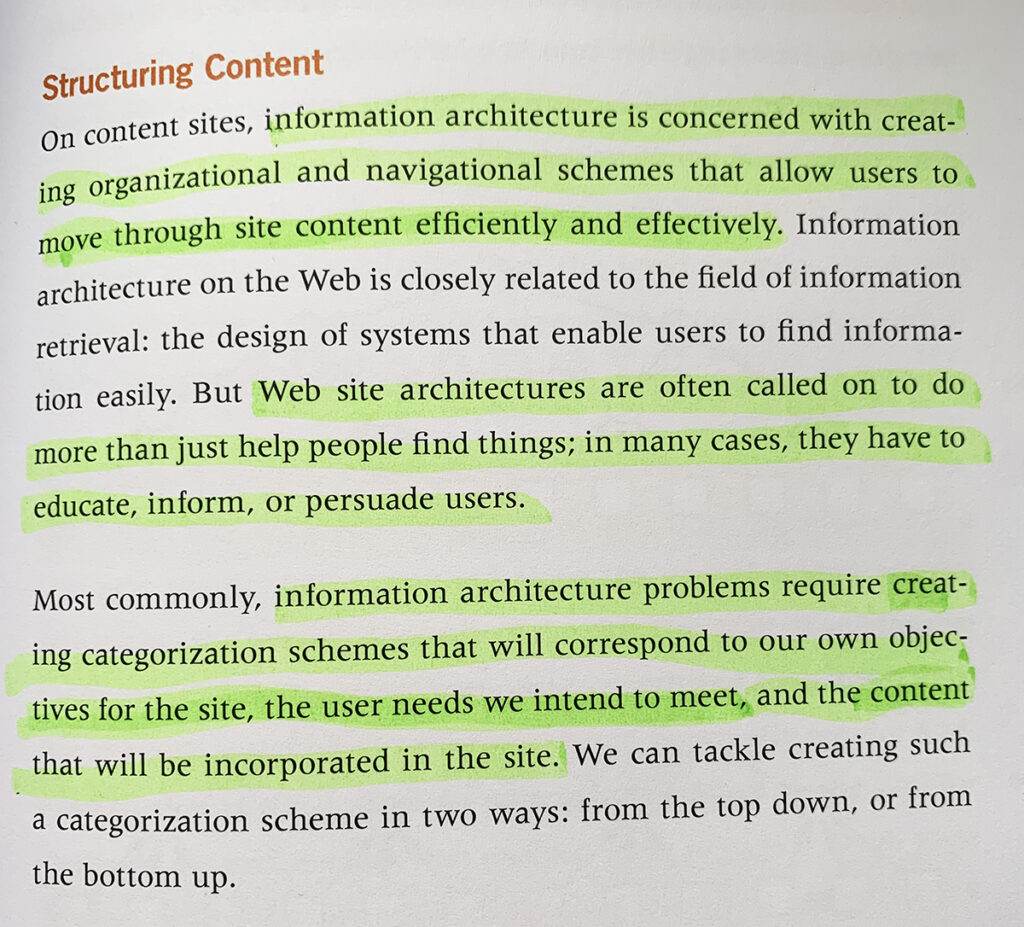
It should be organised efficiently and effectively, in a way that educates and informs, and that corresponds with the user needs we intend to meet.

Categorise by objective?
As we know, DIY marketeers are keen to learn how they can use their content smarter, and the ready-made articles can be used in different ways, with different strategic objectives and benefits.
So why not let them search for the content by marketing objective? Five strategic objectives were identified during research, so it could be useful to allow users to search for articles that are suited for those objectives.
Constant Content have got great search/filter options, all above the fold, no scrolling. Keyword search and advanced search options allow users to add additional filters to the search results.
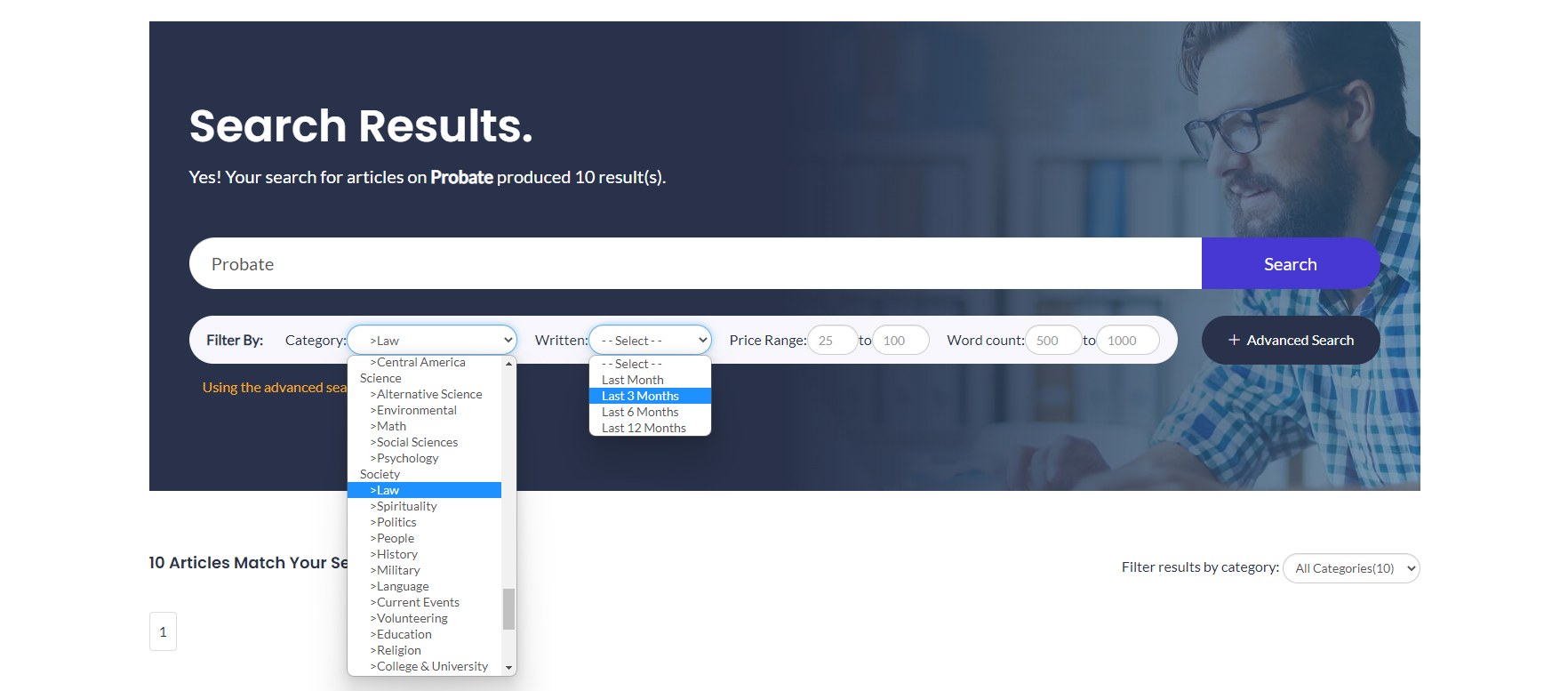
Using the same format, our platform could allow for keyword search, filter by legal category, and the 2nd filter option could be to select a strategic objective. It goes hand-in-hand with the useful explainers in the left sidebar so the user can learn about simple marketing objectives, but also search for articles that fulfil those objectives.

Example use-case
Following a run of home-moving clients, a conveyancing department could search for topical content suited to people who have just bought/sold a house.
They could type ‘residential property’ in the search bar, and then select ‘Maintain relationships’ to filter the results. The results would display all articles related to that topic, that are suitable for newsletters and topical social posts.
This content would engage further with their recent home-moving clients, providing them with relevant, useful content. This helps maintain a relationship with those clients, and hopefully increase the chance they will return next time they need legal services.

This potentially useful feature to help DIY marketeers is straightforward to set up in Woocommerce, with minimal extra coding or customisation. The existing product category/attributes system could be set up to facilitate this filter method fairly easily.
All that would be required by the writers at Today’s Media is to check boxes for each strategic objective that would be appropriate for each article as they upload them. There is cross-over between the five objectives, so each article could be assigned to more than one use-type/objective.
A card-sort of the existing topic library is planned to help identify the legal categories, such as ‘Divorce’, ‘Probate’ etc.
Devising topics
Lindsay at TM described having difficulty sometimes when devising new topics each month with the writers. Spreading the topics across the five objectives could help with this issue, by making sure there was at least one article for social media/newsletters, and at least one service page explainer etc. Coming up with ideas for topics would have more structure, and over time the archive would have a more balanced selection of articles.
Re-purposing
It may also help address the issue of re-purposing the topics. David Frederick’s feedback about noticing the same topics being re-purposed could be mitigated by using the same topic across the different use types. An article on making wills could be written in two or three different ways – once for a service page, once for social, etc. The same topic used differently.
Monthly delivery

David from Today’s Media had a concern that subscribers might forget to log in each month and download their articles. The Baker-Law interview aimed to understand exactly how they choose, select and download the articles. As a larger, full service law firm with different departments using the articles, the delivery process has to be considered carefully.
Baker-Law interview
Baker Law get the full five articles. They pick and choose across all areas of law.
There is no marketing manager – “everyone just chips in”
They make their choices between different people and departments.
“There is no fixed split between departments – we balance it based on the titles rather than a fixed set-up”
They look at all fifteen articles and pick & choose from the list to make up the five.
“Because the articles are covering various departments within the firm, there is always going to be an element of communicating them around”
Hannah oversees the overall process, liasing with colleagues to choose articles, and communicating with Today’s Media by email.
Current monthly delivery process
- Hannah receives the topics from TM
- Topics are forwarded to relevant colleagues to make their choices
- Departments send their choices back to Hannah, who forwards the final list of five articles to TM
- When the articles are ready, Hannah takes delivery by email and sends them to relevant departments
- They make tweaks, and send them back to Hannah
- Hannah places them in blogs and on service pages
There may be a different split of topics between departments each month. How can the new online system enable the busy departments to view the fifteen new titles each month, and liase between each other to choose a final shortlist of five?
And then, how can the chosen articles be distributed around the different departments for checking, editing, and sending back to Hannah?
Don’t rock the boat
Although the new website will be much simpler, it will also be a significantly different delivery process. It was important not to move to far away from the current way of doing things, to minimise any unwanted disruption to the clients.
“Its a fairly simple process, it works the way it does at the moment. I dont have to log in, I can just look at the email, read the titles in there, and reply. If you had to go and log on, you would be like ‘oh i cant be bothered’. Choosing from the email is convenient”
Amy Nelson
She did then add that she struggles to highlight her chosen topics on the list in the email when sending her selections back to Hannah, so there is room for improvement.
Quick select
Upon registration, new subscribers can add the email of the main account holder, and also add the emails of all colleagues who will be using the content.
image of cc field on reg
These ‘CC’d’ contacts will receive the email notifications each month with the new topics.
The email will have the option to login to the dashboard, or choose ‘Quick select’ for colleagues who are short of time.

Choosing Quick select will open a dedicated page in their browser which lists the new topics for that month.
Each colleague can select their chosen articles on the page and click Reserve, which will store their choices in the reserve section in the dashboard area.
When all colleagues have made their choices, the final decision maker can log in to view the reserved articles, add them to the cart and make the final order.
They can download them, and also send them directly to all cc’d contacts, so their colleagues receive the articles via email.
image of ‘send to cc’d colleagues’


Editing the articles
As Amy described, she currently receives the final articles from Hannah, edits them and sends them back for use on the website.
With the Edit article functionality on the download page, Amy could log-in once the final choices have been selected, and make the edits directly on the website.
Hannah could then use the edited articles, copying the text straight from the dashboard into the blog posts.
Development
There are a few more iterations to go, a card sort on the legal categories, and some user testing – but the current wireframes have been sent over to the developer to begin the work. Its been a great project – a really good opportunity to follow the UX design process on a real world product, and turn the research insights into solutions.
During my diploma I was learning about each stage as the project progressed, but this time I started the project with an understanding of the techniques and processes from the offset, so I knew where I was going and what I was doing. Hopefully on my next project I will be able to build on that even more.
I am currently looking for UX roles within a team so I can carry on learning the ropes on large scale projects. I am looking forward to making use of my past experience, my new skills, and also to develop and improve as a designer.
